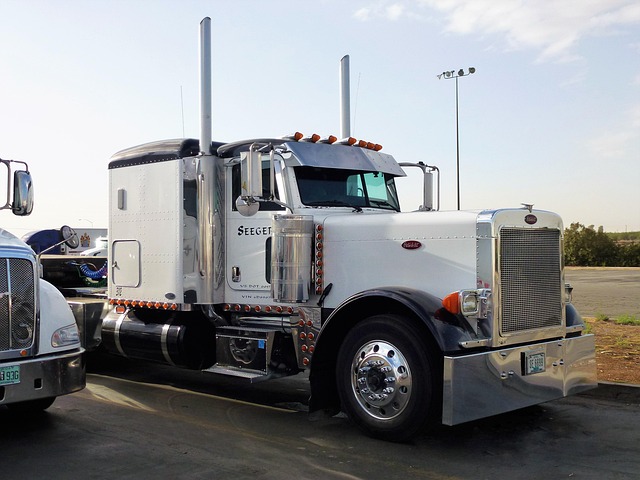“Unsure about how to register your car in California? This comprehensive guide breaks down the process step-by-step. First, understand California’s unique registration requirements and essential documents needed. Next, learn the significance of performing a VIN (Vehicle Identification Number) verification—a crucial step ensuring your vehicle’s authenticity.
Explore the state’s network of Motor Vehicle Offices (MVOs) and discover which one suits your needs. Then, follow our clear instructions to complete the registration process efficiently. Don’t skip the essential VIN verification for a smooth and legal car registration experience.”
- Understand California Car Registration Requirements
- Gather Necessary Documents for Vehicle Registration
- Perform VIN Verification: Steps and Importance
- Select a Suitable California Motor Vehicle Office (MVO)
- Complete the Registration Process at Your Local MVO
Understand California Car Registration Requirements

Before registering your car in California, it’s crucial to understand the state’s specific requirements for vehicle registration. In California, all vehicles must undergo a thorough inspection to ensure they meet safety and emissions standards. This process involves a Vehicle Identification Number (VIN) verification, which is a critical step in establishing the car’s history and authenticity. The VIN is a unique code that identifies your vehicle, and it plays a pivotal role in the registration process.
A mobile VIN verification service can be particularly useful for California residents as it provides a convenient way to complete this requirement. This involves using a specialized tool or software to cross-reference the VIN with official databases, ensuring the vehicle’s details match the records. Some services even offer on-site or mobile vin inspection options, making it easier for you to get your car registered without the hassle of visiting a DMV office.
Gather Necessary Documents for Vehicle Registration

Before diving into the registration process, ensure you have all the required documents for a smooth experience. One crucial step is to verify your Vehicle Identification Number (VIN). This unique code can be found on the vehicle’s registration certificate or in its manual—it’s a string of 17 characters that identifies your car precisely. A vin inspection is essential to ensure the vehicle’s history is clear and accurate, as it reveals any previous accidents or outstanding issues.
Consider using a mobile vin verifier for this step, as it offers a convenient way to check your VIN against national databases. This service ensures that your vehicle meets all legal requirements before registration, saving you time and potential headaches later in the process.
Perform VIN Verification: Steps and Importance

Before registering your car in California, it’s crucial to perform a Vehicle Identification Number (VIN) verification. This process involves checking the vehicle’s history and ensuring it meets all necessary safety standards. To start, you’ll need to obtain the VIN from your car’s registration or the vehicle itself. Then, compare this number with records from various sources, such as state databases and national vehicle history reports. A mobile vin inspection or using a mobile vin verifier can streamline this step by providing quick access to detailed information about the car’s past, including any accidents, outstanding loans, or reported damage.
By completing these steps, you’ll be able to confirm if the vehicle is safe for registration. This verification process not only protects you from potential legal issues but also ensures that your car is roadworthy and in compliance with California’s regulations. It’s a vital step in ensuring a smooth registration experience.
Select a Suitable California Motor Vehicle Office (MVO)

Choosing the right California Motor Vehicle Office (MVO) is a crucial step in the car registration process. With multiple offices across the state, selecting one that suits your needs can save time and effort. Consider factors such as location convenience, office hours, and even the availability of services like mobile vin verification or mobile vin inspection, ensuring a swift and hassle-free experience.
California offers various options, including local DMV branches and specialized vehicle registration centers. For instance, if you’re in need of a quick service, some MVOs provide extended hours or offer the option for a mobile vin verifier to come to your location, streamlining the verification process with a simple VIN check. This flexibility ensures that you can register your car efficiently, whether you prefer a traditional office visit or a more convenient alternative.
Complete the Registration Process at Your Local MVO

Once you’ve gathered all the necessary documents and passed the California vehicle smog test, it’s time to complete the registration process at your local Motor Vehicle Office (MVO). This is where you’ll officially register your car and obtain the required license plates. Start by making an appointment or checking the MVO’s hours of operation, as waiting times can vary. When you arrive, bring along all the essential paperwork, including proof of ownership, insurance, and identification.
The MVO will guide you through the process, which involves a detailed vehicle inspection, including VIN verification. This step ensures that your car meets safety and emissions standards. You can streamline this process with a mobile VIN verifier, which provides quick and accurate readings of your vehicle’s unique identifier. This modern approach saves time and adds convenience to an already essential part of car ownership in California.
Registering a car in California involves understanding state requirements, gathering essential documents, and successfully completing the registration process at your local Motor Vehicle Office (MVO). A crucial step is performing a VIN verification to ensure vehicle authenticity. By adhering to these steps, you’ll be well on your way to securing your vehicle’s registration in this vibrant state.
